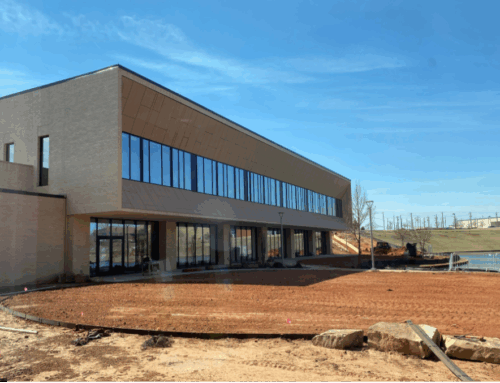Healthcare real estate development has undergone a quiet but profound shift in recent years. The days of thinking exclusively in terms of large, single-site hospitals are behind us as health systems increasingly embrace decentralized, community-based outpatient facilities like urgent cares, freestanding emergency departments and multispecialty medical office buildings.
The key driver behind this shift is clear: access. Patients want healthcare that is closer to home and better aligned with their expectations for convenience and service. But healthcare providers should proceed with caution. With the right strategy, they can meet community needs while also creating a natural gateway into their broader network of care for the more profitable higher acuity services and procedures.
Another defining change has been flexibility. Five years ago, most projects were designed with a specific purpose in mind. Now, clients are seeking to build adaptable spaces that can shift with community growth/demand as well as technology. A building that serves one function today may need to look very different in 10 years. Designing with flexibility in mind allows new facilities to evolve with the changes in demand and care delivery.
New pressures are also shaping how projects move forward. Rising construction costs, supply chain delays and labor shortages have forced developers and health systems to get creative. In many cases, developers are helping systems limit risks associated with procurement up front by ordering equipment like electrical switch gear or air handlers before a project is even fully designed. That approach helps secure scarce resources and ensure speed to market.
The current labor environment, in particular, is constantly affecting timelines. Project planning now requires frank conversations with construction managers about their workforce capacity and competing projects whereas five years ago, labor availability was rarely discussed.
Technology is also reshaping priorities. While some health systems have been slower to embrace major digital innovations, the trend lines are clear: patients and providers alike are looking for tools that streamline the care experience, from facial recognition to simplify registration to pushing more patient communication to branded smartphone apps.
So, what’s next?
Strategic Placement – Systems can’t afford to build everywhere. Success will come to those who carefully study patient needs and data analytics to align new facilities with long-term master plans. All healthcare providers have felt the pain of higher building costs. Those who do their homework will see a higher return from their investment.
Design Flexibility – Buildings must be designed to adapt to the changing needs of the communities in which they are located. The ability to adjust services or repurpose space without starting over will determine the overall success of any given new facility project.
Financial Responsibility – Patients expect modern, welcoming environments, but systems must deliver them in cost-effective ways. Early collaboration between owners, designers and contractors will be key to achieving both.
Healthcare real estate has always been about more than bricks and mortar. Done right, it’s about connecting people to care in ways that are faster, smarter, more sustainable and provide an overall better patient experience. The last five years have underscored that reality. The next five will demand that these considerations are incorporated into the standard care delivery playbook.
With more than a decade of experience in healthcare development and construction, AJ Misch oversees projects from initial concept through completion with a focus on budget and schedule performance. He has extensive knowledge of regulations, processes and procedures related to outpatient healthcare facilities and has successfully managed a wide range of complex developments at Bremner Healthcare Real Estate. He has a bachelor’s degree in construction engineering and management, and associate’s degrees in building construction management and civil engineering technology, all from Purdue University.






